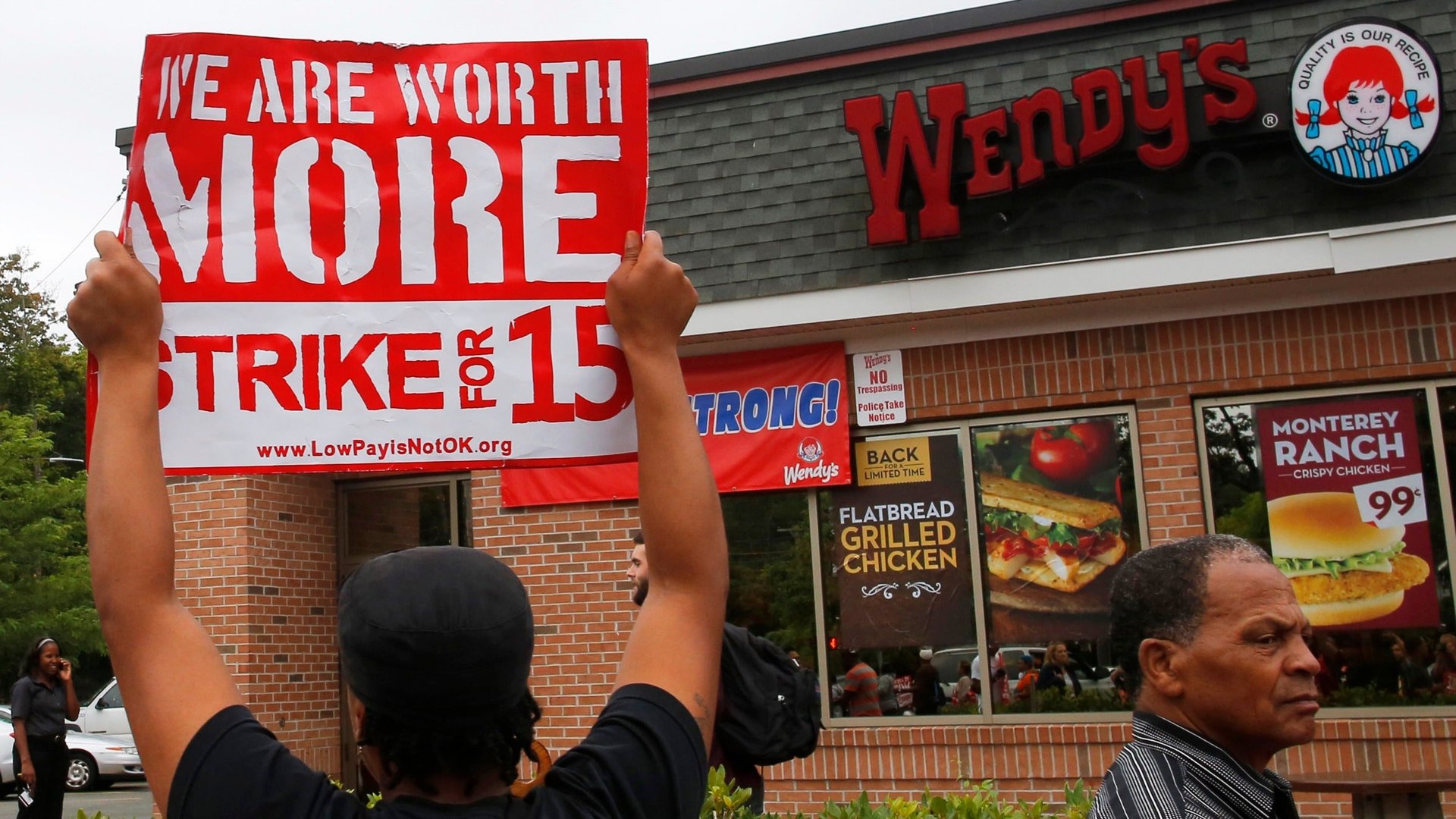More than 50% of fast food workers rely on public assistance and that’s a good thing
In each recession the American economy loses middle-income jobs that don’t come back and are replaced with low-skill, poorly paid work. Fifty eight percent of jobs created since the Great Recession pay less than $13.83 an hour. That leaves many working families on the verge of poverty. These low-wage jobs exist in all corners of the economy, but the fast-food industry has a high proportion of low-skilled workers who receive little pay.


In each recession the American economy loses middle-income jobs that don’t come back and are replaced with low-skill, poorly paid work. Fifty eight percent of jobs created since the Great Recession pay less than $13.83 an hour. That leaves many working families on the verge of poverty. These low-wage jobs exist in all corners of the economy, but the fast-food industry has a high proportion of low-skilled workers who receive little pay.
A new study from the Berkeley Labor Center (pdf) reveals that 52% of fast food workers rely on some form of public assistance, compared to 25% in other industries. This costs taxpayers $7 billion a year. The study’s authors argue that employers should subsidize low-skill workers rather than taxpayers. But that might actually increase the size of the welfare state. If every job paid enough to comfortably provide a middle-class lifestyle regardless of the skills involved, level of productivity or hours worked, there would be fewer jobs, especially for the most economically vulnerable. That would leave more people unemployed, with few prospects, and wholly dependent on benefits. Rather than scrapping government assistance, we need to better understand how low-wages interact with poverty benefits, and which programs work best.
The authors of the Berkeley study use a curious definition of government benefits. Traditional poverty programs like food stamps and Medicaid are counted but so is the Earned Income Tax Credit (EITC), which unlike the other benefits targets low and moderate earners not just people in poverty. The EITC is a credit, $5,236, applied to your taxes if your household income is below $47,162 (with two children), well above the poverty level for a family of four. It seems strange to single out the EITC and not other deductions and credits in the tax code. It could be because the EITC is based on income, but so are most income taxes.
About 19% of fast food workers claim Medicaid and 24% claim food stamps. A quarter of fast food workers living in poverty is troubling though not surprising when you consider that 41% of the workers in their sample work under 30 hours a week and 27% are younger than 23 and live with their parents. A more telling statistic would be the percentage of fast food workers who are working full-time, over age 25 and entitled to poverty assistance (food stamps or Medicaid), but that statistic is noticeably absent.
The study doesn’t explain why so many fast food employees only work part-time. There are several potential reasons that vary for each worker. It could be because fast food workers can’t find other work and are only offered part-time hours or it could also be a voluntary choice. Fast food workers tend to be younger than workers in other industries; many are in school or have other commitments that only allow them to work part-time. The study aptly demonstrates that a large number of fast food workers face very high marginal tax rates because they qualify for government benefits. If they worked more hours and earned more, they’d lose those benefits, which may undermine their incentives to work full-time. Research by economists Larry Kotlikoff and David Rapson shows that low-wage workers face large costs to moving to full-time work through the loss of benefits. In many states, earning wages above poverty means that you lose government-provided healthcare for you and your children.
The authors conclude that fast food jobs pose a significant cost to society because many workers depend on government benefits, but it’s not clear what the alternative should be. Should we take away the benefits and make the tax code less progressive so fast food workers need to work more hours? The report suggests fast food franchises should pay more along the lines of the $15/hour wage proposal. Though working part-time, many fast food workers will still qualify for government benefits. Besides, while small changes in the minimum wage may not have a big effect on unemployment, large ones (like doubling it to $15) do. It means that fast food companies will put more workers on part-time hours or hire fewer workers. Recent work by economist Jon Meer and Jeremy West shows that higher minimum wages means fewer minimum wage jobs are created. These jobs provide many workers an entry point into the labor market.
Government benefits may create incentives to work less, but that seems to be a worthwhile trade-off, even at the expense of taxpayers, to ensure that the most vulnerable members of society are protected. Programs like EITC are successful because they encourage work, but still redistribute income to the most needy—the high take-up rates among fast food workers show the benefit is working as it should. American workers need more middle-income jobs, but simply having employers pay middle class wages for low-skill and part-time jobs isn’t the answer. The lack of middle-income jobs reflects deeper trends such as globalization and technology. Restoring a vibrant middle class workforce requires taking on harder issues like education and mobility. Higher fast food wages won’t fix this and actually cause more harm than good.